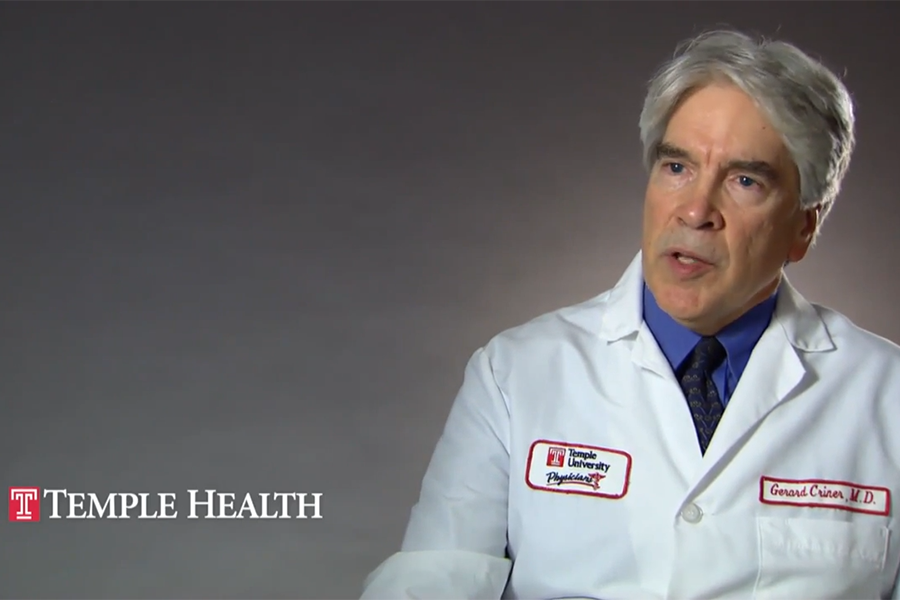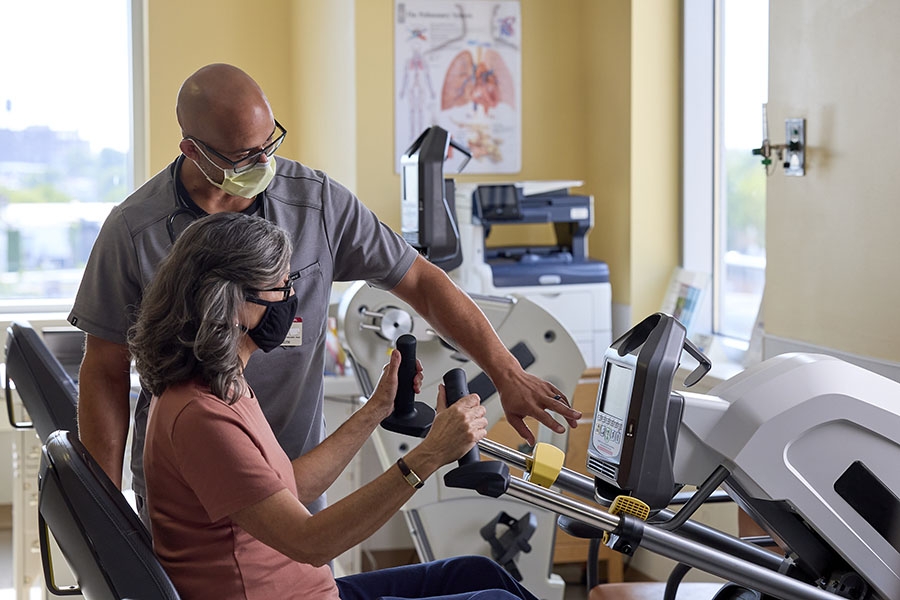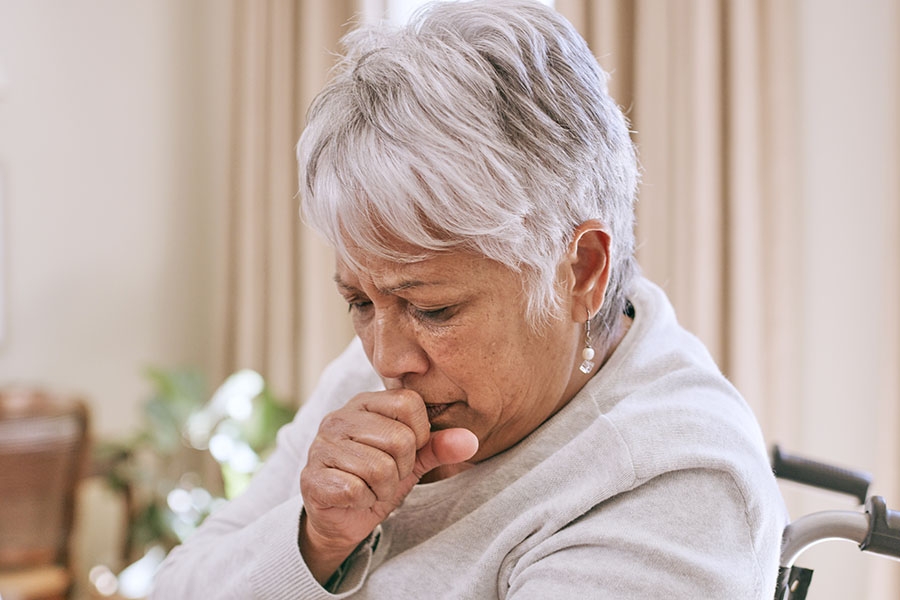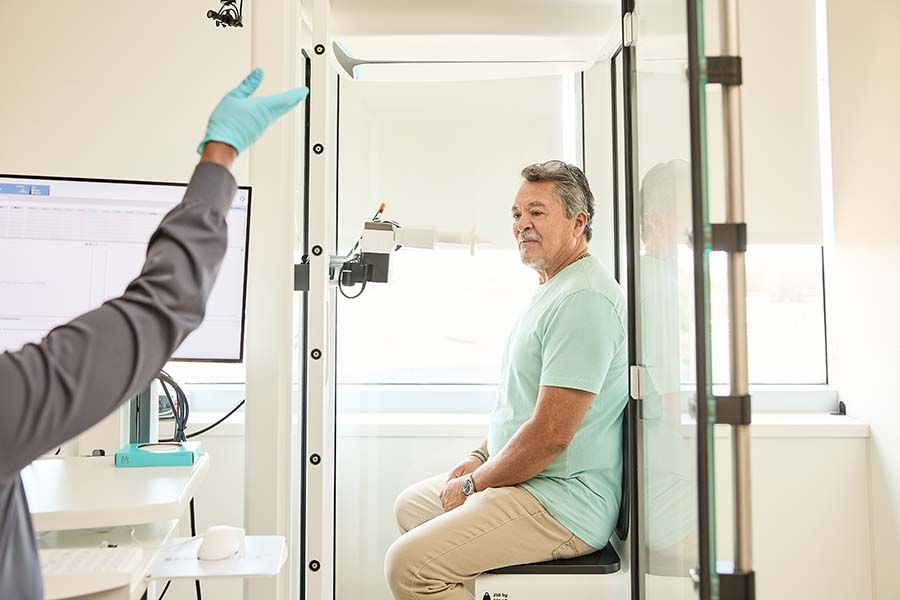COPD is an obstructive lung disease that restricts airflow to the lungs. Since its symptoms are similar to diseases such as asthma, diagnosing COPD is difficult. The following information provides answers to frequently asked questions about this condition.
Chronic Obstructive Pulmonary Disease (COPD) Frequently Asked Questions
About COPD
COPD is a chronic lung disease that is strongly linked to cigarette smoking. Other types of tobacco smoking — including pipes, cigars and water pipes — and smoking marijuana are also risk factors.
Additional risk factors for COPD include exposure to second-hand smoke and air pollutants (air pollution, chemical fumes or dust), genetics/family history and advancing age.
COPD symptoms can vary widely from patient to patient. The most common symptoms are chronic cough, saliva/mucus production, shortness of breath (especially with exertion) and fatigue. Symptoms often progress slowly over time, or may come and go in people with milder stages of COPD. Symptoms can also suddenly worsen (called acute exacerbation).
The 4 stages of COPD are:
- Mild
- Moderate
- Severe
- Very Severe
Doctors determine which stage a patient is in by using a breathing test called a pulmonary function test. This test measures how hard it is for a patient to breathe out (called airflow obstruction). Your doctor will also talk to you about your symptoms, how many times you’ve had moderate to severe flare-ups and whether you have other chronic diseases.
Patients with COPD are also divided into 4 groups — A, B, C or D. Which group a patient is in depends on his or her symptoms and how often the disease worsens (exacerbates). The 4 groups progress from mild to severe, with Group A patients having mild COPD symptoms and lowest risk of exacerbation, and Group D patients having severe symptoms and frequent exacerbation.
The life expectancy of COPD patients can vary greatly and depends on factors such as the severity of airflow obstruction, a patient’s smoking history and overall health. On average, patients with COPD live 5 to 14 years following diagnosis, depending on the stage. To determine a patient’s survival rate, doctors use the BODE index to measure 4 different factors — body mass index, airway obstruction, dyspnea (a patient’s degree of breathlessness) and exercise tolerance.
A flare-up or exacerbation of COPD is when symptoms suddenly worsen. Symptoms of a flare-up include:
- Coughing and/or wheezing with or without mucus
- Shortness of breath
- Swelling in the ankles, legs or feet
- Chest tightness
- Low energy
- Frequent respiratory infections
If you experience symptoms of a flare-up, stay calm and call your doctor. Treatments are available, including medications and steroids.
Some flare-ups are very serious, and you should call 911 or go to your nearest emergency room right away. Serious signs include:
- Fast heartbeat
- Blue lips, fingernails or toenails
- Cannot catch your breath or have a hard time talking
- Feel foggy, or are not mentally alert
A flare-up (or exacerbation) of COPD symptoms can last 7 to 10 days, but may go on for a longer period of time. Symptoms include having a hard time catching your breath or getting enough air, increased mucus, coughing and wheezing. If you experience any of these symptoms — especially if you have had a respiratory infection — talk to your doctor. Treatments are available, including medications and steroid therapy.
COPD is most commonly linked to smoking, but even non-smokers can get COPD. Risk factors for developing COPD include:
- Smoking cigarettes
- Exposure to second-hand smoke or other lung irritants, such as smoke from a fire or fireplace
- Long-term exposure to chemical fumes and agents
- Asthma and chronic bronchitis
- Recurrent respiratory infections
- Genetic factors
- Age and gender
Your doctor may test you for COPD if you have problems with shortness of breath, chronic cough, mucous production or recurrent respiratory infections.
Chronic obstructive pulmonary disease, or COPD, is a term used for a group of lung conditions that affect your breathing. Emphysema is a type of COPD that causes damage to the air sacs in your lungs. Emphysema is caused by exposure to irritants such as tobacco smoke, air pollution or chemical fumes.
COPD and asthma have similar symptoms, but they’re actually quite unique lung conditions. Here’s how to know the difference:
COPD
- Usually diagnosed after the age of 40
- Symptoms persist despite treatment
- History of exposure to lung irritants, such as tobacco smoke
- Symptoms get worse over time
- Chest X-ray shows lung changes
ASTHMA
- Usually starts before the age of 20
- Is common in those with a family history of asthma or allergies
- Symptoms tend to come and go
- Symptoms respond to bronchodilator treatment or steroid treatment
- Chest X-ray is normal
It’s important to get a correct diagnosis, because COPD symptoms of cough and shortness of breath are also symptoms of asthma. Talk to your doctor about a referral to a pulmonologist, a doctor who specializes in lung conditions and diseases.
Treatment Options
There is currently no cure for COPD, since the damage it causes to the lungs is not reversible. There are things a person can do to prevent COPD from becoming worse, and there are an increasing number of therapies that can help ease the symptoms of the disease.
There are 2 goals when treating COPD: improve the symptoms of the disease and prevent a sudden worsening of the disease (called acute exacerbation).
Quitting smoking is the best way to prevent COPD from getting worse.
Other treatments may include:
- Pulmonary rehabilitation, which includes an exercise program, nutritional counseling, how to manage COPD and more.
- Medications, such as bronchodilator inhalers to open your airways, inhaled corticosteroids to reduce inflammation in the airways and prevent flare-ups, and oral steroids for people with sudden worsening of symptoms despite conventional therapy.
- Oxygen therapy to help relieve shortness of breath.
- Surgery, such as bronchoscopic lung volume reduction (BLVR), lung volume reduction surgery (LVRS), or lung transplant for patients with very severe COPD.
Lung volume reduction surgery is a surgical procedure that removes diseased lung tissue from patients with advanced COPD. This surgery may improve symptoms and survival in carefully selected patients who have low exercise capacity and emphysema that is predominantly in the upper lobe of the lung.
Oxygen therapy is prescribed by your doctor to help relieve shortness of breath. It can be given for brief periods of time, or as a long-term therapy. Oxygen therapy is relatively safe, but you may experience some side effects, including:
- Dry or cracked skin in and around your nose
- Feeling sleepy or tired
- Having headaches in the morning
If you’re prescribed oxygen at home, it’s important to understand how to operate your tank. You should never smoke or be around a flame when using your oxygen.
For those with COPD, breathing exercises can help strengthen your diaphragm, allowing you to breathe easier. Try these breathing exercises at home:
PURSED LIP BREATHING
First, breathe in through your nose for a count of 4 breaths. Then exhale through your mouth for a count of 8 breaths with pursed lips, taking twice as long as you did to breathe in. Do this 3 to 5 times.
BELLY BREATHING
Lie down on your back in a comfortable position. Place one hand gently on your stomach. Breathe in slowly through your nose into your belly, counting to 4. Notice your hand rising as your belly fills with air. Breathe out through your mouth to a count of 8.
You may work with a respiratory therapist to learn other breathing techniques. Respiratory therapists are certified medical professionals who specialize in helping people with breathing problems.
Your doctor may treat your COPD with medication, lung therapies such as oxygen, or surgery. But part of your treatment plan also includes lifestyle modifications you can do at home. These include:
- Quit smoking and avoid lung irritants
- Get your vaccinations, including influenza and pneumonia
- Do your breathing exercises
- Drink water and use a humidifier to decrease cough
- Eat a healthy diet, full of fruits, vegetables and low-fat protein
- Exercise daily, under the guidance of your doctor
Before starting any new program, talk to your doctor, who can help direct you to supportive resources such as respiratory therapy, pulmonary rehabilitation and smoking cessation programs.
Lifestyle Changes
COPD is a preventable disease in most patients. The best way to prevent COPD is to quit smoking or never smoke. If you’ve tried to quit smoking before, consider joining our Smoking Cessation Program.
Also, try to avoid long-term exposure to lung irritants such as air pollution, chemicals, dust and second-hand smoke.
Studies suggest eating certain foods may contribute to symptoms of COPD. These include:
- Cured or processed meats, such as hot dogs, bacon and cold cuts.
- Fried foods, especially those prepared in trans fats or saturated fats
- Meats high in saturated fats, such as beef
- Refined grains, such as cereals and white bread
- Desserts and sweets that contain a high amount of sugar or dairy
Many of these foods are high in additives such as salt, sugar or nitrates, which can make breathing difficult due to bloating, water retention or weight gain. Excess mucus builds up in people with COPD, leading to cough and throat-clearing. Milk and dairy products thicken mucus, making it hard to clear.
Eating a healthy, nutritious diet helps decrease inflammation and promotes better breathing. Talk to a dietitian or nutritionist about a meal plan that keeps you healthy and satisfied.
Learn More About COPD

If you're experiencing symptoms of COPD or want to discuss treatment options, schedule an appointment with a Temple pulmonologist or call 800-TEMPLE-MED (800-836-7536) today.





